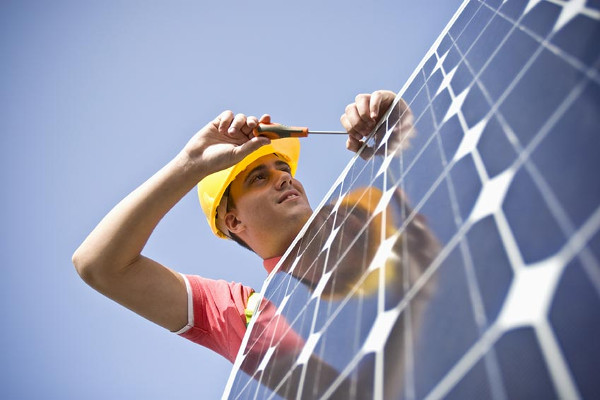Depending on the type of residential property or business you own, there is a specific type of solar energy system that best suits that location.
Whether it’s located in the heart of a city, in the suburbs, or if it’s that cabin in the woods – a different type of installation must be implemented.
Location here is the key characteristic as distance from the grid will be determinant in choosing the type of system best for each scenario.
There are basically three types of Solar Electric Systems:
Grid Tied Solar Systems, Grid Tied Solar System with a Battery Back-up or Hybrid Power Generator, and the Off-Grid Solar Power System.
1 – Grid Tie Solar System:
This is a very common installation, and is favorable for cities and suburbs or residential areas with close proximity to the electric grid. In this system, the PV installation is connected to the grid and a two way meter may be installed to read the flow of electricity to and from the grid.
The advantage with this system is that the PV installation may not necessarily be seized to meet all the needs of the residence or business.
If demand surpasses supply at any one time especially in peak hours, electricity is simply pulled from the grid to make up.
This situation is reversed when the capacity of the installed system is high enough and produces more than needed electricity.
The extra electric power is pushed or back-fed into the grid which produces credits the consumer can then use at periods of low production such as at night to offset their power consumption.
2 – Grid Tie Solar System with Battery Back-up or Hybrid Power Generator:
This system differs from the above-described in that it has a battery or power generator component.
The system best suits areas without a credible power grid. The Solar engineer may design the system to store some of the electricity produced when production exceeds demand, in specially designed ‘Deep Cycle Batteries’ for use when the grid goes down.
The engineer can also incorporate a fuel electric generator in the design dubbed ‘hybrid’ for the same function.
3 – Off-Grid Solar Power System:
This system is completely cut off from the traditional grid. It best suits locations such as cabins in the woods, mountains or remote areas of the developing world with no electric grid.
This system also incorporates the battery and the power generator in its design. Instead of using a battery or generator as a simple back-up, it is used as a necessary component.
The battery is used to save electricity for rainy days – literally – while a generator is needed when the battery drains out due to continues use and in days with no power production.
Installing any of these systems depends on location and recommendations by the solar engineer or professional. It is important to note that in each design, convenience and efficiency will be affected.
Now you know more about solar electric system types–which of these would best suite your needs depending on your location?











Comments